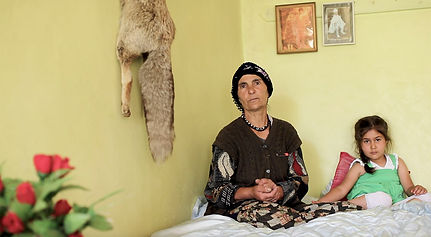And if I devoted my life to one of its feathers?
Curated by Miguel Lopez, Kunsthalle Vienna. May 2021.
“And if I devoted my life to one of its feathers?” writes the Chilean poet and activist Cecilia Vicuña in her 1971 poem Precarious. With this question, which Kunsthalle Wien and Wiener Festwochen have now chosen as the title for their joint project, Vicuña counters anthropocentric and hetero-patriarchal urges with healing and appreciation, reviving the aesthetic and spiritual bonds between human and non-human entities and worlds. In keeping with these aspirations, the exhibition curated by Miguel A. López reflects on the rationale of exploitation, the fast-paced mining of raw materials, and environmental destruction as a colonial legacy. It tells the story of indigenous struggles for collective survival and celebrates encounters defined by solidarity in their resistance to misogyny, imperialist violence, and state oppression. Some of the contributions are a specific response to the Covid-19 pandemic, not just as a health crisis, but also as one of ecological and social justice. And if I devoted my life to one of its feathers? combines works by more than 35 artists from around the world in order to initiate in Vienna a unique conversation about power, sovereignty, self-representation, and the reclaiming of a plurality of life choices.
Encompassing performance, video, photography, and painting, Nilbar Güreş’s practice often deals with the construction of gender identity within patriarchal structures. In her paintings included in And if I devoted my life to one of its feathers?, we are presented with a world that blurs all borders: elements begin to blend together, and established hierarchies between species and sexes are replaced by an intertwined trans-existence. Güreş conceives of queer imagery that does not expect to be understood or explained. A rose tree hands out breast implants to humans, a pot sits inside a glass house, a palm tree becomes angry after getting peed on, and a nonbinary figure becomes a many-headed hydra. It is a world where pure, wild nature has returned, shy creatures have reappeared, the grass has grown high, and flora, fauna, and humans engage in a playful, and even humorous, game of blurring genders and hierarchies. Another recent body of work focuses on life in a small village in Bingöl Province in the Eastern Anatolia region of Turkey, where the artist’s father, a Kurdish Alevi, grew up. Largely home to this religious minority, the area has suffered structural neglect and sabotage for decades, suggest - ing a process of systemic disenfran - chisement by the government. It is here that Güreş also senses a deep, if largely unacknowledged, connection to Latin America, and especially to its Indigenous cultures and cosmologies. Kurdish Alevis practice a religion that is perhaps closer to a cultural identity than a form of worship. Many teachings are transmitted orally, through stories and hymns. While their traditions have persisted in an isolated form, Kurdish Alevis are open-minded and have a pre - colonial understanding of the body and the earth. Güreş’s two sculptures Monitor Head (2021) and Unmasking (2021) speak about her attempts to document, understand, and support this neglected yet rich community. For instance, one sculpture has an embedded video of an interview with the artist’s aunt, in which she describes the violent disconnect wrought between generations when Turkish was imposed as the region’s official language, and vast amounts of knowledge — especially that of oral tradition — was simply lost. In Güreş’s work, daily life takes on a performa - tive aspect, representing its rewards and hardships in a remarkable yet natural way that deeply confounds notions of normality.

Red Tongue / White Tongue (2021) as part of the scrulpture

Part of the process

Exhibition View of Red Tongue White Tongue, 2021
Mixed media on fabric & single channel video installation: 125 x 378 cm
Video 1'43'' colour, sound, with Kurdish & English subtitles